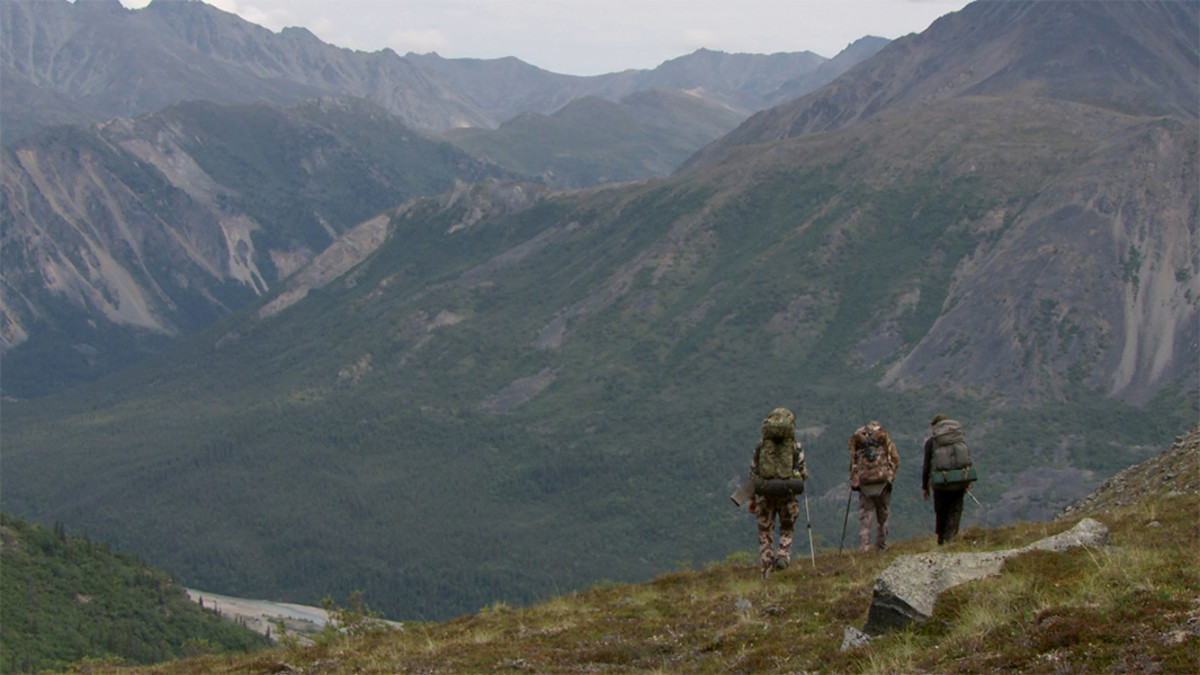
When a hunter is carrying everything he needs to survive on his back, the thrill of taking an animal becomes almost secondary to the thrill of staying out on the land and fending for oneself for a period of days or even weeks.
But that’s not to say that the backpack hunter is somehow less interested in having a successful hunt. Backpack hunters are committed to searching out the richest and least exploited hunting grounds, and they’re willing to suffer in order to reach them.
Often, the payoffs for these efforts can be extraordinary. Many of the United State’s finest public land hunting opportunities belong solely to the backpack hunter because he’s the only one who’s willing and capable of reaching them.
Backpack Hunting Locales
A good backpack hunting location is any area that’s inaccessible to hunters who are operating out of vehicles. Such areas might be inaccessible for a variety of reasons, including a complete lack of roads or else a closure of existing roads due to legal restrictions or weather conditions.
Some areas, such as Alaska’s Brooks Range, Idaho’s Frank Church Wilderness, or Montana’s Bob Marshall Wilderness, are almost wholly inaccessible to vehicle hunters. These are the great famed bastions of the backpack hunter, though backpack hunting opportunities are certainly not restricted to pure wilderness locations.
In fact, some of the finest backpack hunting opportunities are on the fringes of vehicle access areas, in places that lie just beyond the reach of road hunters but not so far into the backcountry that you’re competing with outfitters who pack in large groups of hunters on horses or mules. In some cases, an hour-long uphill climb is all that it takes to prevent vehicle-based hunters from visiting an area.
Typically these guys will stay within a mile or so of their vehicle, and they’ll almost never stray more than three miles away. In the rare instance that a vehicle-based hunter does walk more than three miles, he usually won’t reach the furthest point of his wandering until the midday period, when hunting conditions are at their worst. In order to avoid nighttime walking, he’ll start heading back to his rig well before the primetime dusk period.
The game animals in such areas are sometimes completely chilled out, as they haven’t experienced any hunting pressure. What’s more, other animals from pressured areas tend to congregate in these places after getting bumped from their usual haunts. The backpack hunter is uniquely equipped to capitalize on such hunting grounds because he doesn’t waste valuable time and energy traveling back and forth from a distant vehicle or camp.

Realistic Distances
Of course, the range of a backpack hunter is limited to how far he can feasibly pack the meat of his kill. Deer sized animals, once they’re boned out, can usually be transported in a single (though sometimes grueling) load. Other animals, such as moose, might require a hunter to make 6 or 7 trips while carrying 100-pound loads. Before heading out on a backpack hunt, a hunter needs to be realistic about how much he can endure.
One time, my brother Matt and I backpacked into the mountains a distance of nine miles and shot two cow elk. After killing them, we quartered the carcasses and hung them in a tree where they were safe from grizzlies. Then we boned out 200 pounds of meat and loaded 100 pounds into each of our backpacks and headed for the truck. It was well past dark when we got there. We camped at the trailhead that night, and then left before daylight the next morning to make another run.
After 18 miles of walking, we were back at the truck after dark that night with another 200 pounds. We then did the same thing the next day, moving the final 200 pounds over the same trail that we’d now traveled a total of six times. All while enduring single-digit temperatures. It took us about a week to physically recover from that trip. Now, I regard the distance of 9-miles as being the outer limit of how far I’ll walk for an elk.
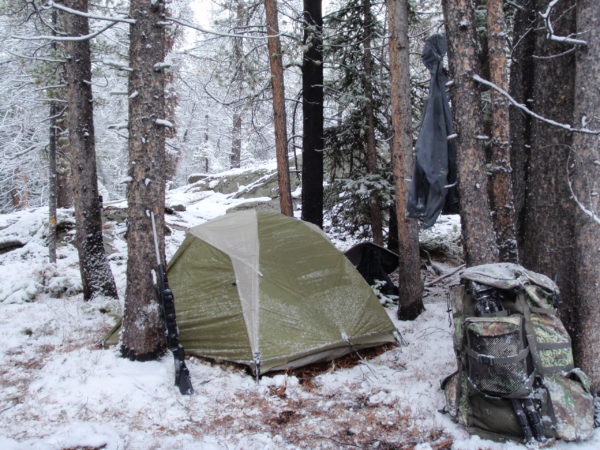
Backpack Hunting Strategies
Many backpack hunters specialize in the spot-and-stalk hunting strategy, mainly because the locations that are most suitable for backpack hunting occur in the Rockies and Alaska – places where open expanses and varied topography are the norm. In these regions, it’s often possible to spot game from a long ways off and then execute a carefully planned approach. But the backpack hunter is hardly limited to a spot-and-stalk strategy. Archery elk hunters in Arizona will backpack into their favorite mountain ranges and then use calling strategies almost exclusively once they get there.
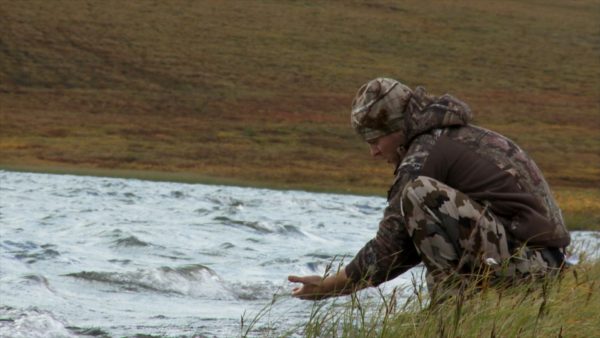
Black bear hunters in California will backpack into remote areas and then spend their entire trip setting up ambushes at the edges of likely feeding areas. A blacktail deer hunter in Oregon might backpack into an area that’s primarily suitable for still-hunting; day after day, he’ll carefully work mile upon mile of brushy and timbered terrain while sleeping wherever he happens to be at nightfall.
More typically, though, a backpack hunter needs to be elastic in his approach. Because he’s traveling long distances over unfamiliar terrain, he needs to be ready for anything. For instance, you might hike into an area for mule deer and then spend your first day glassing from a peak to see if you can identify some distant areas with a lot of deer activity. The next day, you might still-hunt a ridge where you’d seen some deer, albeit from a couple miles away, the day before.
If that fails, you might spend an entire day ambush hunting on a canyon-bottom trail that seems to be getting a lot of deer traffic. If nothing turns up there, you might climb to yet another peak that gives you a fresh perspective on a new patch of ground. All along, you shouldn’t be worried about how you’re switching from one tactic to another. You’re hunting in ways that the situations dictate, doing what makes the most sense at the moment.
Downfalls of Backpack Hunting
A disadvantage of backpack hunting is that you’re creating extra disturbances in your hunting area by “living” in close proximity to your quarry. Without access to showers or laundry facilities, your stench can get pretty bad during warm weather hunts.
Game can wander into your camp at night and get spooked out of the area without you ever knowing that it happened. The simple chores of camping, such as cooking, collecting water, clearing a comfortable tent-site, all add to the problem.
These negatives can be limited by taking a careful approach to hygiene and campsite selection. When possible, pack along a fresh set of underwear and a fresh set of socks for each day you’ll be out. Use moist towelettes to wash yourself at night, and apply an unscented body powder to your groin, armpits, and feet.
When hiking long distances, go shirtless or wear just a merino t-shirt if the weather allows; this will keep your clothes from getting too sweaty. Wash yourself in small creeks, even if it’s so cold your bones ache. When it comes to sleeping, try to make your camp a mile or more from where you plan on hunting. You’re still within easy striking distance, but your disturbance is somewhat removed. Camping in thick timber or in the bottoms of narrow drainages can help keep you hidden from surrounding wildlife.
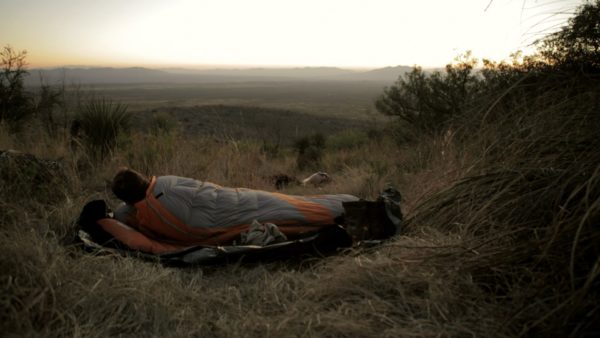
Sometimes, though, walking to and from your hunting or glassing spot makes more commotion than just sleeping where you are. In these cases, don’t make fires and forego the tent if at all possible. Try to find a low spot that’s out of the wind and lay out your sleeping bag on a tarp or pad. Then get into your bag, lie low, and keep movement to an absolute minimum.
One of my most memorable nights in the mountains was spent literally surrounded by Coues deer in the Arizona desert. I had hiked up to a good glassing area, only to realize that I had does in every direction. Rather than risking a hike back down to the canyon floor, I crawled into my sleeping bag at dark and forced myself to eat 2,000 calories worth of energy bars rather than mess around with a Jetboil. Four bucks showed up below me at daybreak. I shot one just a short crawl away from camp.
On backpack hunts, it’s often a good idea to stash the bulk of your gear where you anticipate spending the night. This allows you to do the morning and evening hunts with a lighter load. But be careful not to travel too light. You should stay prepared for long days and emergencies, by bringing along a few extra layers of clothes, plus food, water, and a basic field kit. You can put all of this gear into a regular backpack, and then cinch the pack down to reduce the profile. If you make a kill, you can expand the pack and haul a load meat back to camp.
What’s more, this partially filled pack often comes in handy as a rifle rest for prone shots. If you’re traveling a long ways from base camp, or if you’re hunting in an exceptionally rugged area where nighttime travel is difficult or dangerous, pack along your sleeping bag as well. This way you can bivy out for the night if you stray too far from camp and can’t get back before dark, or if you kill an animal and have to sleep next to it in order to protect it from bears and other scavengers.
Keep in mind, too, that you should always pay careful attention to where you stash your gear. Use an easily identified landmark, and mark it with a waypoint on your GPS. If you come stumbling back in the dark, exhausted and overburdened with meat, you don’t want to have a hassle trying to locate your food and gear.
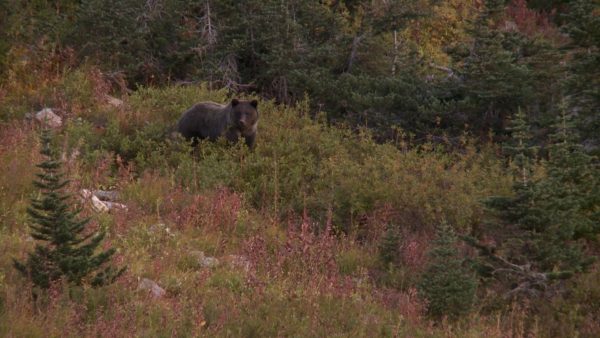
As for bears, particularly grizzlies, the backpack hunter needs to be prepared for them. Grizzlies inhabit most of Alaska plus much of the backcountry habitats in Montana, Idaho, and Wyoming. Currently they are expanding their range beyond these areas as well; in the near future, they may very well become a fact of life and a welcome one, in my opinion, in Colorado, Washington, Oregon, and perhaps elsewhere. When hunting in grizzly country, you need to maintain maximum awareness at all times. This is especially true after you’ve made a kill. A grizzly will contest the ownership of the animal and he’ll fight you for it.
You want to get carcasses quartered quickly and then get those quarters hung high in a tree as soon as possible. Ideally, you want the meat hung ten feet high and about four feet away from the tree’s trunk. This will help keep grizzlies as well black bears and coyotes away from it. If there’s no tree that can support the meat, then move the edible portions of your kill as far as possible from the gut pile. This will help buy time, as bears will want to consume the soft organ tissues first. Drape the meat with dirty clothes and any extra odds and ends from your backpack in order to increase human odor and to make the carcass seem as unnatural as possible.
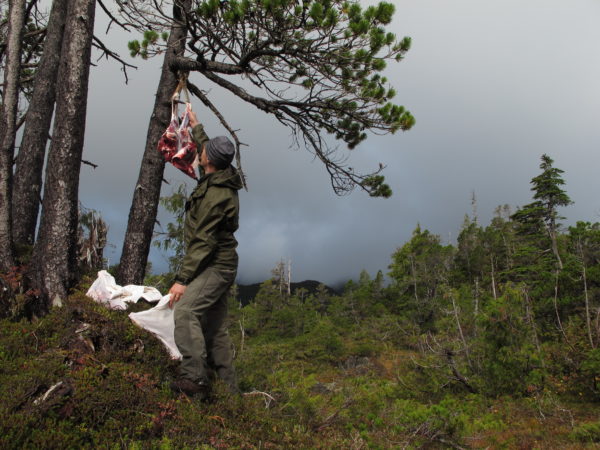
When approaching your meat cache on return trips, make a lot of noise and come in, slowly, from an upwind direction. This will let any bears know that you’re coming, and hopefully they’ll scoot out. Keep in mind, it is ILLEGAL to kill a grizzly bear that has claimed your animal unless it poses an immediate threat to your life. If a grizzly takes your kill, and you can’t scare it away by using safe and reasonable measures, then walk away and report the incident to a game warden. In most cases, they will issue you a new tag.
Here’s one trick for backpack hunters that I’ve never seen or heard anyone else mention: pay attention to backpackers. I mean this in two ways: One, let them do some scouting for you; and two, pay attention to their technologies. As far as scouting goes, backpackers are far more open about what they’ve seen on their journeys than hunters are. That’s because backpackers aren’t typically worried about keeping their spots secret. Time and again, I’ve pried backpackers about their most recent journeys into the mountains and received valuable up-to-date information.
One example that comes to mind was a pair of backpackers I met near a trailhead in the Bitterroot Mountains. I started yacking them up and they bragged of having just seen three black bears on a ridgetop that was covered in huckleberries. I went up there and found two of them, though I didn’t kill either one. At other times, I picked up information about elk, mountain goats, and mule deer from backpackers.
Most of this was gotten by bumping into backpackers at trailheads or along well-traveled backcountry routes and then just asking if they’ve been seeing a lot of wildlife. While I’m not suggesting that you lie, I do think it’s wise to conceal your identity as a hunter as much as possible when discussing critters with backpackers.
It’s an unfair generalization to say that backpackers are opposed to hunting, many backpackers are hunters, myself included but you’ll find that they’re freer with information if they don’t think they’re putting “their” animals at risk. Maybe just say that you like to take pictures. Also, it’s wise to spend time on the internet to see what backpackers are saying about certain areas.
Recently, I’ve been doing some online scouting for a mountain goat tag that I just drew in Southeast Alaska. So far, the most valuable information that I’ve found has come from a backpacking blogger who made his way to a particular backcountry lake last summer and saw a bunch of them. He even shared his route of travel.
As for technology, the backpacking industry has managed to stay way ahead of the hunting industry on lightweight and functional equipment. Up until a few years ago, when a handful of hunting apparel companies began to make high-performance gear for mountain hunters, I dressed almost completely in clothes meant for mountaineers and backpackers.
I found them to be better fitting, your average backpacker is way thinner than your average hunter, longer lasting, and more comfortable than traditional hunting garb. As for other integral categories of gear, including water purification systems, sleeping systems, tents, and cooking equipment, you’re still better off shopping at backpacking websites than hunting websites.
But the backpack hunter who’s preparing for his first backcountry trip shouldn’t fixate on gear to the point that it detracts from more important issues. The primary piece of equipment that deserves 95% of the backpack hunter’s attention is his own body. The majority of hunters, even many of those who consider themselves to be in good shape, are incapable of withstanding the rigors of a backcountry hunt. Just ask any Dall sheep guide and they’ll tell you: the number-one thing that keeps their clients from success isn’t shoddy backpacks – it’s lack of stamina.
Preparation Aligns the Hunter with Success
Quite simply, people get into the mountains and they start to fall apart: blisters, sore muscles, pulled tendons, chafed skin, and exhaustion. And this isn’t because these people are lazy or weak. Rather, it’s because backpack hunting demands that a person be able to walk long distances over rough terrain while carrying a heavy load and not a combination of abilities that are honed by typical exercise regimens.
In order to prepare oneself for a backpack hunt, you should plan on doing several months’ worth of running or biking, weight training, and hiking long uphill distances while wearing the exact same boots and backpack that you plan on wearing during your hunt. With proper training and preparation, you’re backcountry hunting experience will almost certainly become a defining point in your life. You’ll never feel as free and alive as when you embark into the wilderness with a pack and rifle, the land opening ahead of you.




